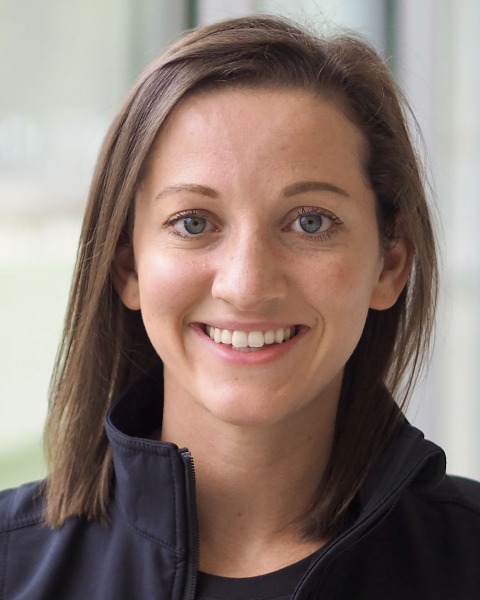Spinal Cord Injury
Targeting Frequency of Gait Training in the Motor Complete Cervical Spinal Cord Injury Population: A case series
Tuesday, October 31, 2023
2:55 PM - 3:01 PM
Location: Station 4

Brittnay Grimm, PT, DPT
Physical Therapist Clinical Leader
Sheltering Arms Institute, Virginia, United States
Poster Presenter(s)
Research Objectives: To investigate the feasibility of at least three times a week of task specific walking practice for persons with motor complete spinal cord injury and to determine if this will positively impact walking outcomes.
Design: Case Series
Setting: 114 bed inpatient rehabilitation hospital
Participants: 74 year old male admitted with C4 AIS B SCI, 53 year old male admitted with C5 AIS B SCI
Interventions: Two patients with diagnosis of motor complete cervical SCI received 3 or more task specific stepping sessions per week using advanced rehab technology (Ekso, Lokomat BWSTT, Vector BWS, Andago BWS, Bioness L300 Go)
Main Outcome Measures: 10 Meter Walk Test (10MWT), 6 Minute Walk Test (6MWT), and Walking Index for Spinal Cory Injury II (WISCI II),
Results: Patient one’s 6MWT increased from 0 feet to 70 feet, 10MWT from 0 m/s to 0.11 m/s, and WISCI II from 0 to 6. He averaged 4.5 task specific walking sessions per week with 45% gait billed time and 17% of specific walking time based on optical heart rate monitoring. Overground body weight support was the primary technology used for this patient. Patient two’s 6MWT increased from 0 feet to 39 feet, 10MWT from 0 m/s to 0.13 m/s, and WISCI II from 0 to 1. He averaged 3.6 task specific walking sessions per week with 47% gait billed time and 22% of specific walking time. Overground body weight support was the primary technology used for this patient.
Conclusions: Three or more task specific walking sessions each week using advanced rehab technology is feasible for patients with motor complete cervical spinal cord injuries. With greater weekly task specific sessions, both patients showed increased scores in the 10MWT, 6MWT, and WISCI II. Patient two met the MDC for the 10MWT, while patient one nearly met the MDC. Future studies will further investigate barriers of using advanced rehab technology, determine optimal interventions for promoting high intensity, and expand implementation to onsite clinicians through knowledge translation.
Author(s) Disclosures: none
Design: Case Series
Setting: 114 bed inpatient rehabilitation hospital
Participants: 74 year old male admitted with C4 AIS B SCI, 53 year old male admitted with C5 AIS B SCI
Interventions: Two patients with diagnosis of motor complete cervical SCI received 3 or more task specific stepping sessions per week using advanced rehab technology (Ekso, Lokomat BWSTT, Vector BWS, Andago BWS, Bioness L300 Go)
Main Outcome Measures: 10 Meter Walk Test (10MWT), 6 Minute Walk Test (6MWT), and Walking Index for Spinal Cory Injury II (WISCI II),
Results: Patient one’s 6MWT increased from 0 feet to 70 feet, 10MWT from 0 m/s to 0.11 m/s, and WISCI II from 0 to 6. He averaged 4.5 task specific walking sessions per week with 45% gait billed time and 17% of specific walking time based on optical heart rate monitoring. Overground body weight support was the primary technology used for this patient. Patient two’s 6MWT increased from 0 feet to 39 feet, 10MWT from 0 m/s to 0.13 m/s, and WISCI II from 0 to 1. He averaged 3.6 task specific walking sessions per week with 47% gait billed time and 22% of specific walking time. Overground body weight support was the primary technology used for this patient.
Conclusions: Three or more task specific walking sessions each week using advanced rehab technology is feasible for patients with motor complete cervical spinal cord injuries. With greater weekly task specific sessions, both patients showed increased scores in the 10MWT, 6MWT, and WISCI II. Patient two met the MDC for the 10MWT, while patient one nearly met the MDC. Future studies will further investigate barriers of using advanced rehab technology, determine optimal interventions for promoting high intensity, and expand implementation to onsite clinicians through knowledge translation.
Author(s) Disclosures: none

.jpg)
